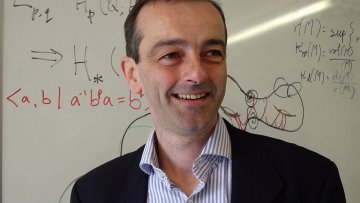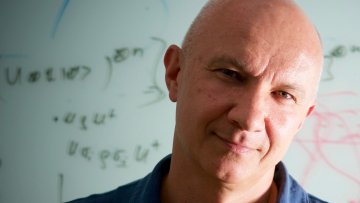Mirror symmetry, supersymmetry and generalized geometry on SU(4)-structure vacua
Abstract
Recently, there has been some progress in examining mirror symmetry beyond Calabi-Yau threefolds. I will discuss how this is related to flux vacua of type II supergravity on eight-dimensional manifolds equipped with SU(4)-structure. It will be shown that the natural framework to describe such vacua is generalized complex geometry. Two classes of type IIB solutions will be given, one of which is complex, the other symplectic, and I will describe in what sense these are mirror to one another.




